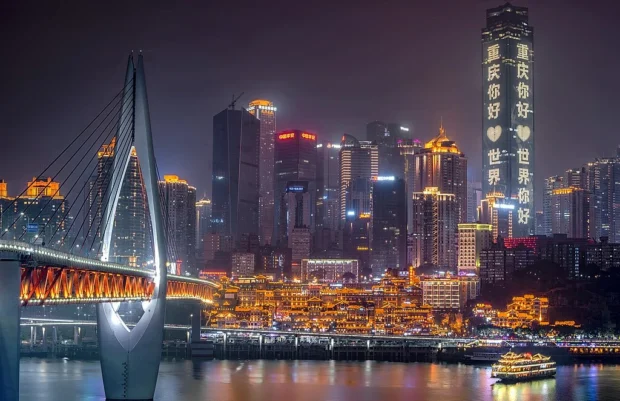In the heart of southwest China lies Chongqing, a city that climbs and folds among steep hills and the meeting of mighty rivers. It is a place for slow steps and fresh smells that fill the air-spices, river water, and cooked goods. People here live in a mix of the old and the new, their voices dancing in the streets and over bridges. If you want to taste Chongqing’s essence, you need to walk where the city breathes: in its streets, markets, and hillsides.
Table of Contents
For a contrasting experience of China’s urban charm, explore Xi’an’s blend of ancient walls and vibrant modern life that complements Chongqing’s unique hills and rivers.
Rivers and Bridges: The City’s True Spine
Chongqing is sometimes called a city of fog and mist because of its often humid, cloudy weather. But it is the rivers that shape it most. Where the Yangtze and Jialing Rivers join, the city spreads like a giant embrace. The rivers are lifelines, and the many bridges crossing them connect hills filled with colorful houses. One of the oldest bridges, Dongshuimen Bridge, hangs over the water like a giant steel bird. From its middle, you see boat traffic carrying goods and fishermen who cast nets at sunset.
For those drawn to historic urban landscapes and iconic sights, Beijing’s landmarks and culture reveal another big city’s timeless beauty and stories worth walking through.
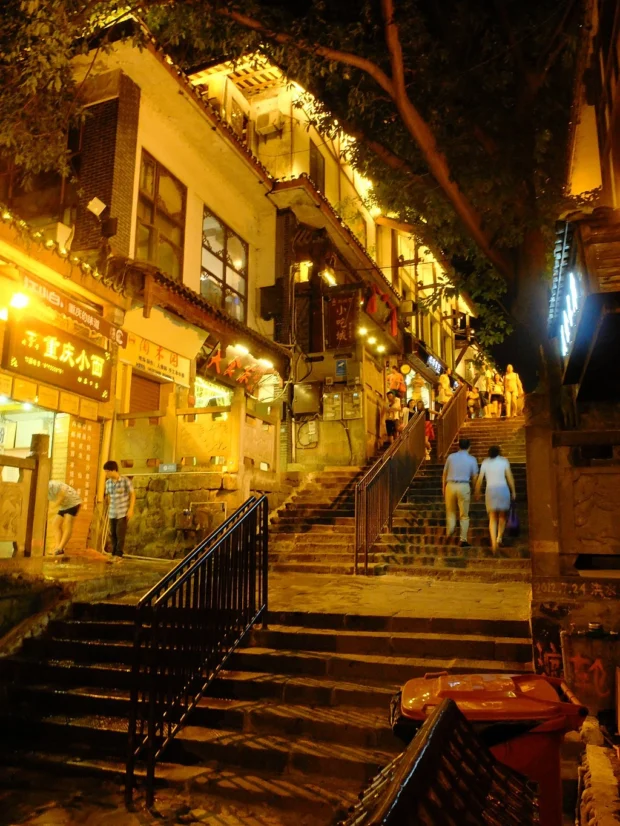
Take a cruise on the Yangtze River at night to see the city lights bloom across the hills. The glowing skyscrapers reflect in the water, creating a scene that feels both lively and calm. This view is perfect for those who want a little peace after a day of walking the busy streets.
Old Towns and Quiet Corners
Chongqing is not all modern towers; it holds quiet pockets where the past lives on. Ciqikou Ancient Town is one such place. It is an old neighborhood with narrow stone paths and wooden houses, some centuries old. There, the smell of tea leaves and incense fills small shops where craftsmen still make ceramics and paper fans. Strolling here can feel like stepping back in time, but the town is lively with locals selling snacks and colorful trinkets. If you want a souvenir with meaning, this is the place to find it.

Hidden Gardens and Bamboo Groves
Beyond the riversides and old towns, Chongqing hides small gardens and bamboo forests. In the city’s parks, bamboo stalks sway gently, offering shade and calm. The Bamboo Garden, located near the city center, is a peaceful spot for walking or sitting with a book, watching children climb trees or families enjoying tea. These green spaces are sometimes overlooked but are a refreshing break from the city’s busy hum.
Flavors of Chongqing: Spicy Bites and Hot Pots
One cannot write about Chongqing without mentioning its famous hot pot. This local dish is a bubbling pot of spicy broth filled with thin slices of meat, vegetables, and tofu. The broth is bright red with chili and peppercorns, creating a tingling, warm sensation on the tongue. Sichuan peppercorns, in particular, cause a pleasant numbness that many first-time eaters find surprising.

If you visit the bustling Jiefangbei district, don’t miss trying small street snacks like spicy noodles or grilled skewers. The food smells strong and inviting, with a mix of chili, garlic, and fresh herbs. A popular sweet treat is the glutinous rice balls filled with sesame paste-perfect after spicy meals.
While hot pot is best enjoyed with friends, small noodle shops scattered around the city offer a quick, solo meal. They serve noodle bowls with aromatic broth and fresh spring onions, warming you from the inside on a cloudy day.

Getting Around in Chongqing
Chongqing is huge and hilly, so moving around can be a bit of a challenge. The city’s subway system is modern and efficient, connecting major districts, including the airport and train stations. To reach downtown from Jiangbei International Airport, taking the subway is convenient and cost-effective. The trains are clean, air-conditioned, and easy to understand even for travelers with little Chinese.
For shorter trips, the city’s many pedestrian bridges and escalators make climbing the steep terrain easier. Chongqing is famous for some very long outdoor escalators, especially near the city center, which help you go up hills quickly without tiring your legs. Walking remains one of the best ways to discover small markets and hidden shops tucked on narrow paths.

Customs and Cultural Notes
When visiting, it is good to remember a few simple customs. First, it is polite to give and receive items, especially money for purchases, with both hands. This shows respect and attention. Second, many people in Chongqing appreciate a quiet, calm tone in conversation in public spaces. Speaking loudly can sometimes be seen as impolite. Lastly, while it is common to see people eating on the street, it is best to avoid eating while walking, especially in less busy areas.
In conversations, locals may smile or nod even if they do not fully understand. This is part of keeping harmony and politeness in social interactions. Asking simple questions about food or directions often leads to friendly help and sometimes an invitation to try something new.

Uncommon Stories and Surprises of Chongqing
Chongqing’s geography makes it a city of stories. One odd fact is that it sits on a fault line, and the city has to be built with strong foundations to prevent damage from earthquakes. There is also a longstanding tradition of shadow puppetry in the region, where colorful leather figures dance to tell old tales. Keep an eye out for small theaters or street performers-this ancient art still lives here.
Another curiosity is Chongqing’s status during World War II. It served as China’s wartime capital and was heavily bombed. Today, museums and memorials in the city recall this difficult time, showing how the city managed to survive and grow from its hardships.

Places to Stay for Every Explorer
Where you rest after a day’s walk matters. Chongqing offers many guesthouses and inns tucked into hillsides, where you can wake up to views of misty rivers or busy markets. Many of these places blend modern comfort with traditional design-think wooden beams and paper lamps. Staying in the Yuzhong district brings you close to the city’s financial heart and lively night scenes, while Jiangbei, across the river, offers quieter neighborhoods and easy transport links.
For travelers who enjoy small, personal places, look for family-run guesthouses in older neighborhoods. Hosts often share stories about their city and may cook breakfasts with recipes passed down through generations.
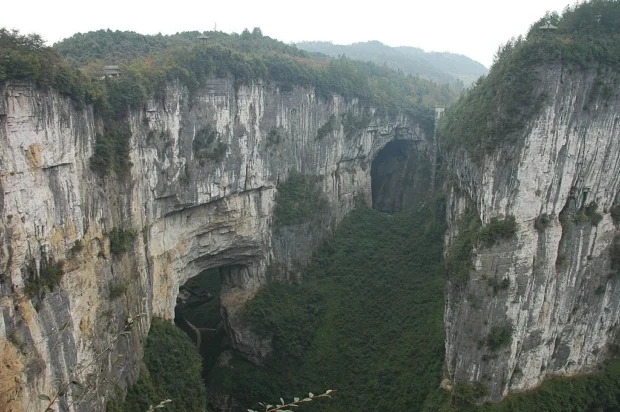
One last tip: weather in Chongqing can be warm and humid in the summer with lots of rain, so pack light clothes and a raincoat. Winters are milder than northern China, but still cool. A good pair of walking shoes will serve well on uneven streets.
Chongqing waits quietly between its hills, ready to reveal moments of spice, history, and life to anyone patient enough to listen and walk along its winding roads. Its rivers tell stories, its food invites conversation, and its people smile with secrets just beneath the surface.
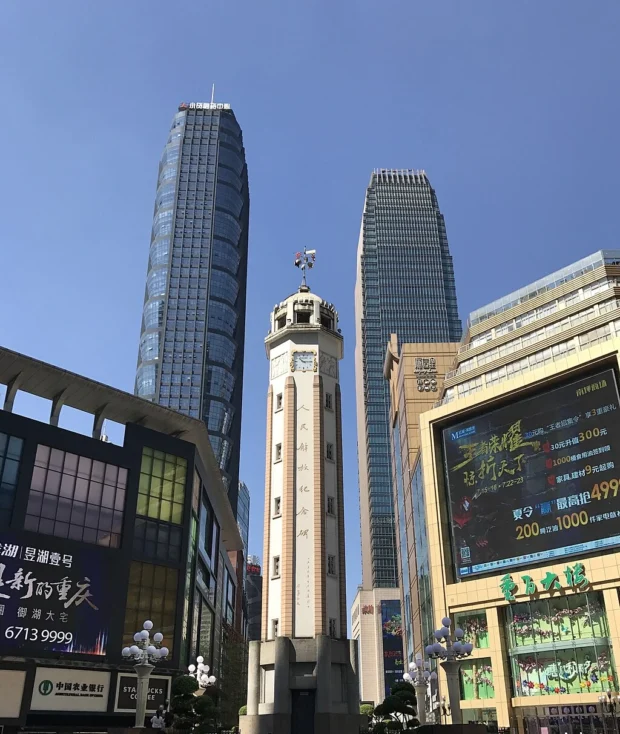
For more about Chongqing’s sights, you can visit the official website of the Chongqing Municipal Government, which offers detailed guides about the city’s cultural landmarks and events.
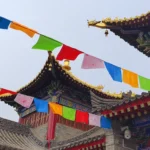
A Chinese tour guide with deep knowledge of the Far East, its traditions, and culinary secrets.
- Chongqing Nightscape by Jay Huang on Wikimedia Commons – cc by 2.0
- 028 Sichuan-160811 28 (29868006911) by Franco Pecchio from Milano, Italy on Wikimedia Commons – cc by 2.0
- Three Gorges Museum Chongqing by Eng.Justus Byebirooha on Wikimedia Commons – cc by-sa 3.0
- Hongya Cave 20180520(2) by xiquinhosilva on Wikimedia Commons – cc by 2.0
- Chongqing Jiefangbei CBD by Baycrest on Wikimedia Commons – cc by-sa 2.5
- Baodingshan Cliff Carvings (50620441966) by Hugh Llewelyn from Keynsham, UK on Wikimedia Commons – cc by-sa 2.0
- 鹅岭两江亭 – panoramio by somaliayaswan on Wikimedia Commons – cc by 3.0
- Giant panda and sign, Chongqing Zoo, China by Jpbowen on Wikimedia Commons – cc by-sa 4.0
- Jiefangbei (People's Liberation Monument) by Juukeihc on Wikimedia Commons – cc by-sa 3.0
